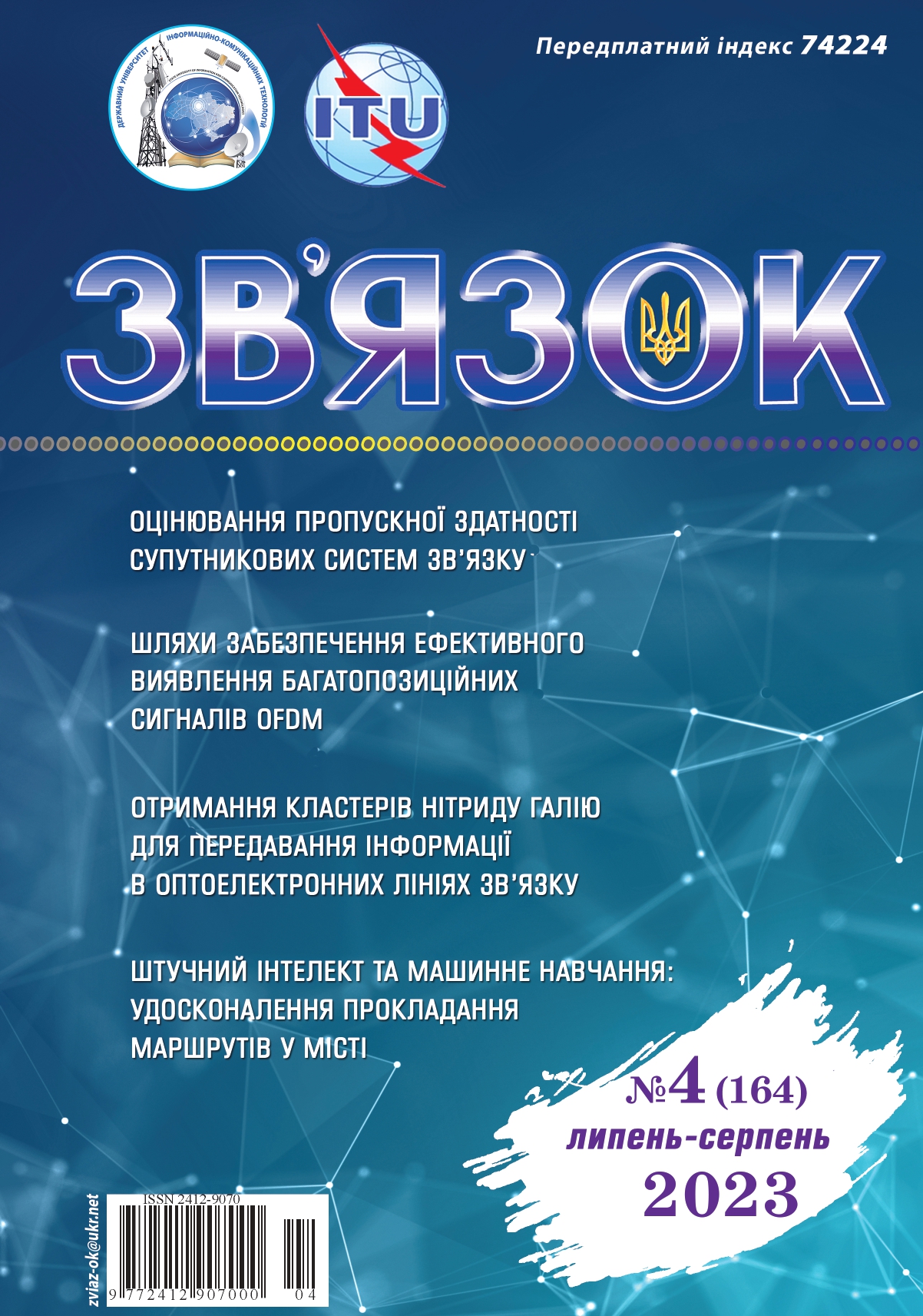Оцінювання пропускної здатності супутникових систем зв’язку
DOI: 10.31673/2412-9070.2023.041020
Анотація
Досліджено та оцінено пропускну здатність супутникових систем зв’язку. Важливим кроком для підвищення ефективності будь-якої супутникової системи є застосування посилених методів кодування з виправленням помилок при передачі даних. Цей підхід дозволяє забезпечити більшу надійність та стійкість зв’язку, особливо в умовах погіршеної погоди або інших перешкод, що можуть впливати на якість сигналу.
Застосування кодування з виправленням помилок полягає у вставці додаткової інформації в передачу даних, яка дозволяє відновлювати втрачену інформацію у випадку її пошкодження або втрати під час передачі. Цей процес вимагає обчислювальних ресурсів і спеціальних алгоритмів, але він значно підвищує надійність зв’язку.
Завдяки кодуванню з виправленням помилок Starlink може забезпечувати стабільний інтернет навіть в умовах, коли інші супутникові системи можуть втрачати зв’язок через інтерференцію або погодні умови. Це особливо важливо для користувачів, які розраховують на надійний доступ до мережі у будь-який момент.
Ключові слова: Starlink; імітаційне комп’ютерне моделювання; передача даних; супутниковий Інтернет; завадостійкість; кодування; пропускна здатність.
Список використаної літератури
1. Sklar B. Digital Communications, Fundamentals and Applications. 2nd ed. Prentice Hall PTR, 2001.
2. World’s most advanced broadband satellite internet. Starlink. URL: https://www.starlink.com/technology
3. Cakaj S. The Parameters Comparison of the ’Starlink’ LEO Satellites Constellation for Different Orbital Shells // Frontiers in Communications and Networks. 2021. vol. 2, no. 7.
4. Broadband LEO constellations for navigation / T. G. Reid [et al.] // Navigation, Journal of the Institute of Navigation. 2018. vol. 65, no. 2. P. 205–220.
5. Position, Navigation, and Timing Technologies in the 21st Century: Integrated Satellite Navigation, Sensor Systems, and Civil Applications / T. G. Reid [et al.] // Wiley-IEEE. 2020. vol. 1. ch. Navigation from Low Earth Orbit: Part 1: Concept, Capability, and Future Promise. P. 1359–1380.
6. Kassas Z. M. Position, Navigation, and Timing Technologies in the 21st Century: Integrated Satellite Navigation, Sensor Systems, and Civil Applications // Wiley-IEEE. 2020. vol. 1. ch. Navigation from Low Earth Orbit: Part 2: Models, Implementation, and Performance. P. 1381–1412.
7. Tradespace exploration of the next generation communication satellites / A. Aguilar, P. Butler, J. Collins, M. Guerster // AIAA Scitech 2019 Forum, 2019.
8. Proakis J. G., Salehi M. Digital Communications, 5th ed. McGraw-Hill, 2007.

